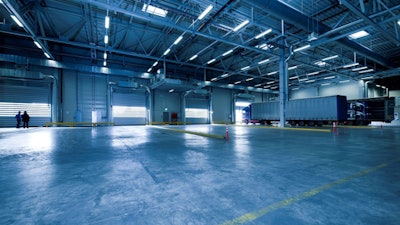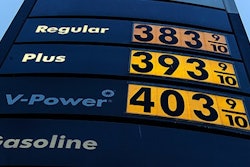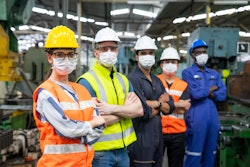
Inflation is killing the supply chain industry. Everywhere you turn, costs are going up and profits are being squeezed. Grocery stores, food warehouses and food distribution centers are not exempt. To provide the best customer experience and increase profits, these facilities must take steps to improve their environment and lower costs. One way to do this is by installing destratification fans. Here’s five reasons why.
Improved employee and customer environment
Thermal stratification is a phenomenon that is in all buildings. It occurs when less dense, hot air rises and cooler, denser air settles at floor level. Air stratification makes HVAC systems less efficient – causing higher energy bills, occupant discomfort and overworking the existing HVAC system – leading to higher maintenance costs. That’s why destratification fans are a great investment for the long-term operation of a facility.
When customers feel comfortable in a store, they're more likely to stay and shop. When employees are more comfortable, they are more productive. Destratification fans circulate fresh air and redistribute it to help keep customers and employees cool and comfortable.
They make cool aisles feel warmer and hot aisles feel cooler by providing a more consistent temperature. This improved customer experience can lead to increased dwell time and more sales for the store. Additionally, the balanced temperature means your HVAC doesn’t have to work as hard to maintain building temperature.
Encourage lingering in the aisles
From the cold cases in the freezer section to warm warehouses, the temperature in food industry buildings varies a lot. With the front doors opening and closing for every new customer or delivery, maintaining a consistent temperature is tough. Without a destratification system, a badly stratified facility can be an unpleasant place to work or shop. Fogging on the exterior glass of case doors? Slip hazards at entrances? Destratification can help here, too!
Destratification fans help solve these issues by circulating the air and balancing the temperature and humidity to maintain a constant environment. With destratified air, the freezer aisles feel warmer and the case doors don't fog so customers can view the products easily, making them more likely to grab that impulse item. These high-margin products increase the average customer purchase and improve the bottom line for your store.
Destratification fans can also improve safety by reducing slip hazards. One of the most important things in a building is air circulation. As people walk in and out of doors during inclement weather, slippery floors can be a major concern. Destratification fans can increase the airflow at the floor near doorways to mitigate slip hazards.
Energy management for lower operating costs
Destratification fans also improve profits by lowering energy costs. Air stratification caused by the front doors constantly opening and shutting, as well as other factors, drive up energy bills and overdrive the existing HVAC system. With temperature and humidity fluctuations, an HVAC system will run more often and can wear out more quickly, requiring replacement. Freezers and door warmers must constantly be running to maintain proper operating conditions. With destratification fans, the door warmers can be turned down – or off in some cases – saving up to 50% of associated energy costs.
In food warehouses, the building is constantly fighting temperature fluctuations. Destratification fans reduce the fluctuations cost effectively. Constant temperatures mean your HVAC system isn’t working as hard, and food products are stored in a more controlled environment. This lowers energy consumption and improves system uptime. Fewer maintenance issues will always improve your bottom line.
Destratification fans balance the indoor environment allowing your HVAC system and the product cases to run at their optimal conditions. By installing destratification fans throughout your store or warehouse, you can improve the indoor environment and reduce energy consumption by 30% or more.
Lower food waste, increase profits
Reducing the stress on food products, vegetables, fruits, meat and other foods will improve their freshness and shelf life. HVAC systems in warehouses can use the extra help that destratification fans provide to better control product storage environments. This will reduce spoilage and improve customer satisfaction.
Some fans fitted with needlepoint bipolar ionization (NPBI) or Photohydroionization (PHI) can also help to keep produce, flowers and other perishables fresher for longer. In real-world tests conducted by Airius, an increased shelf life of up to four days is possible with destratification fans fitted with this technology. This means less spoilage and associated costs. The use of this technology lowers pathogens – including bacteria and viruses – in the air and on food products, allowing for longer shelf life. Fewer spoiled fruits or vegetables means more profits for your store and higher customer satisfaction.
A comfortable environment leads to higher satisfaction, sales and profits
There are many benefits of using a destratification fan in a food warehouse or grocery store, such as improving customer experience, increasing customer comfort and dwell time, reducing food waste and lowering energy costs.
In the food business, there is a lot of pressure to be profitable, but using destratification fans will help the bottom line. If you plan to run a successful food business, you must have high-quality products, a visually appealing design and a solid staff that can keep businesses afloat. No matter what type of food business you own, you'll have to keep all of these things in mind. Using destratification fans helps to keep the air circulated in your store, which can improve the customer experience, increase the amount of time customers stay in the store and lower the amount of energy needed to maintain comfort.




















